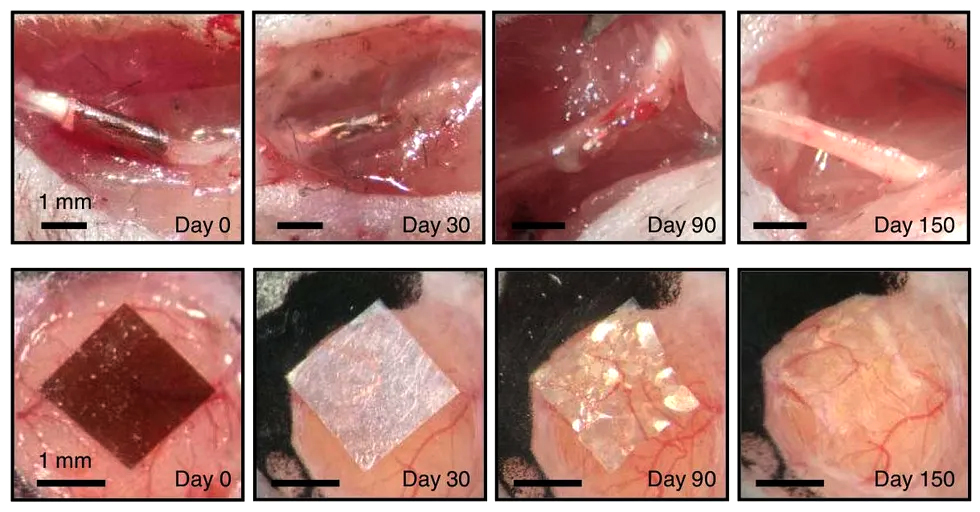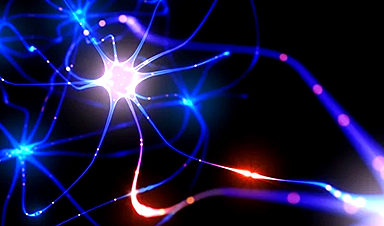Roughly two decades ago, a strategy called optogenetics emerged to control brain activity with lasers. It uses viruses to insert genes into cells that make them sensitive to light. Optogenetics has revolutionized neuroscience by giving researchers a precise way to excite or suppress brain circuits and shed light on what role they play in the brain. However, a key drawback of this work is that it usually only targets cells that are genetically modified to respond to light. Now scientists in China have developed a new way to control brain cells using light without this limitation, potentially greatly expanding the applications of this optical approach.
Optogenetics has a number of advantages over previous methods of controlling neurons. Electrical techniques often prove bulky and invasive, triggering inflammation, while drugs often act slowly and imprecisely, with unwanted side effects. However, the fact that optogenetics works only on genetically modified cells has largely limited it to lab research.
In the new study, researchers experimented with thin-film single-crystal silicon diodes. When illuminated with lasers, the flexible photovoltaic devices could generate either positive or negative electric fields, depending on the polarity of the light.
In tests on lab-grown neurons, the silicon diodes could excite or inhibit neural activity, depending on their positive or negative voltage. In experiments on mice, the devices could also stimulate or silence neural activity in the hind leg and in the part of the brain that handles the sense of touch.
The researchers suggest these silicon films can be used in wireless, battery-free neuron stimulation by means of near-infrared light that can penetrate tissue. Potential applications include manipulating peripheral nerves for control of limb movements, the spinal cord for pain relief, the vagus nerve for treating epilepsy, and the retina for visual prosthetics, says study co-senior author Xing Sheng, a materials scientist and electrical engineer at Tsinghua University in Beijing.

The top series of images shows the natural dissolution of a silicon film on PLLA–PTMC wrapped around the sciatic nerve of mice. The bottom series shows the natural dissolution of a silicon film on the brain cortex of mice. XING SHENG
In addition, these devices are bioresorbable, meaning they naturally dissolve in the body. Therefore, brain surgery is not needed to extract them after they have accomplished any planned therapeutic goal.
“These days, brain-machine interfaces are very hot topics,” Sheng says. “However, most people focus on either the brain part—neuroscientists; or the machine part—electrical engineers. We really need more people to address the interface, which is the essential key.”
The scientists note they have not yet seen how their devices might help in models of disease. Currently, “We need to identify the most applicable scenario to use our devices and design the systems accordingly to satisfy the in vivo applications, and meet the standards for clinical grade implants,” Sheng says.
The researchers detailed their findings online 5 September in the journal Nature Biomedical Engineering.
News
AI Helped Scientists Stop a Virus With One Tiny Change
Using AI, researchers identified one tiny molecular interaction that viruses need to infect cells. Disrupting it stopped the virus before infection could begin. Washington State University scientists have uncovered a method to interfere with a key [...]
Deadly Hospital Fungus May Finally Have a Weakness
A deadly, drug-resistant hospital fungus may finally have a weakness—and scientists think they’ve found it. Researchers have identified a genetic process that could open the door to new treatments for a dangerous fungal infection [...]
Fever-Proof Bird Flu Variant Could Fuel the Next Pandemic
Bird flu viruses present a significant risk to humans because they can continue replicating at temperatures higher than a typical fever. Fever is one of the body’s main tools for slowing or stopping viral [...]
What could the future of nanoscience look like?
Society has a lot to thank for nanoscience. From improved health monitoring to reducing the size of electronics, scientists’ ability to delve deeper and better understand chemistry at the nanoscale has opened up numerous [...]
Scientists Melt Cancer’s Hidden “Power Hubs” and Stop Tumor Growth
Researchers discovered that in a rare kidney cancer, RNA builds droplet-like hubs that act as growth control centers inside tumor cells. By engineering a molecular switch to dissolve these hubs, they were able to halt cancer [...]
Platelet-inspired nanoparticles could improve treatment of inflammatory diseases
Scientists have developed platelet-inspired nanoparticles that deliver anti-inflammatory drugs directly to brain-computer interface implants, doubling their effectiveness. Scientists have found a way to improve the performance of brain-computer interface (BCI) electrodes by delivering anti-inflammatory drugs directly [...]
After 150 years, a new chapter in cancer therapy is finally beginning
For decades, researchers have been looking for ways to destroy cancer cells in a targeted manner without further weakening the body. But for many patients whose immune system is severely impaired by chemotherapy or radiation, [...]
Older chemical libraries show promise for fighting resistant strains of COVID-19 virus
SARS‑CoV‑2, the virus that causes COVID-19, continues to mutate, with some newer strains becoming less responsive to current antiviral treatments like Paxlovid. Now, University of California San Diego scientists and an international team of [...]
Lower doses of immunotherapy for skin cancer give better results, study suggests
According to a new study, lower doses of approved immunotherapy for malignant melanoma can give better results against tumors, while reducing side effects. This is reported by researchers at Karolinska Institutet in the Journal of the National [...]
Researchers highlight five pathways through which microplastics can harm the brain
Microplastics could be fueling neurodegenerative diseases like Alzheimer's and Parkinson's, with a new study highlighting five ways microplastics can trigger inflammation and damage in the brain. More than 57 million people live with dementia, [...]
Tiny Metal Nanodots Obliterate Cancer Cells While Largely Sparing Healthy Tissue
Scientists have developed tiny metal-oxide particles that push cancer cells past their stress limits while sparing healthy tissue. An international team led by RMIT University has developed tiny particles called nanodots, crafted from a metallic compound, [...]
Gold Nanoclusters Could Supercharge Quantum Computers
Researchers found that gold “super atoms” can behave like the atoms in top-tier quantum systems—only far easier to scale. These tiny clusters can be customized at the molecular level, offering a powerful, tunable foundation [...]
A single shot of HPV vaccine may be enough to fight cervical cancer, study finds
WASHINGTON -- A single HPV vaccination appears just as effective as two doses at preventing the viral infection that causes cervical cancer, researchers reported Wednesday. HPV, or human papillomavirus, is very common and spread [...]
New technique overcomes technological barrier in 3D brain imaging
Scientists at the Swiss Light Source SLS have succeeded in mapping a piece of brain tissue in 3D at unprecedented resolution using X-rays, non-destructively. The breakthrough overcomes a long-standing technological barrier that had limited [...]
Scientists Uncover Hidden Blood Pattern in Long COVID
Researchers found persistent microclot and NET structures in Long COVID blood that may explain long-lasting symptoms. Researchers examining Long COVID have identified a structural connection between circulating microclots and neutrophil extracellular traps (NETs). The [...]
This Cellular Trick Helps Cancer Spread, but Could Also Stop It
Groups of normal cbiells can sense far into their surroundings, helping explain cancer cell migration. Understanding this ability could lead to new ways to limit tumor spread. The tale of the princess and the [...]





















